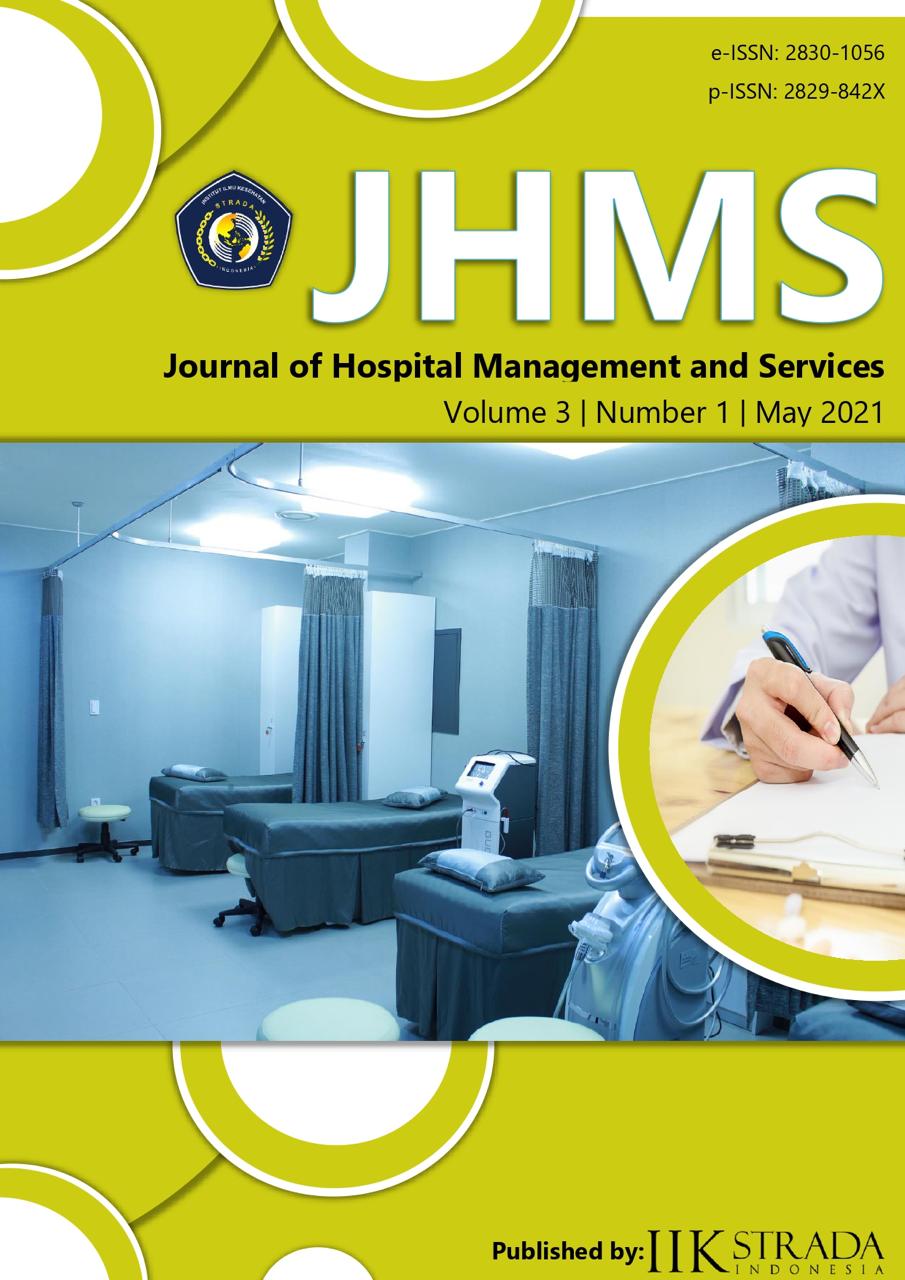Environmental Hygiene and Sanitation Practices Against TB Incidents in the Work Area of Kesamben Health Center, Blitar Regency
DOI:
https://doi.org/10.30994/jhms.v3i1.81Keywords:
Environmental Sanitation, Hygiene Practices, TBAbstract
Tuberculosis is an infectious disease caused by Mycrobacterium Tuberculosis. Indonesia is ranked 3rd largest burden of tuberculosis in the world (8%) after India (27%) and China (9%). The increase in the number of cases in Indonesia continues to increase every year. Although many prevention and management efforts, the spread of tuberculosis bacteria is very easy to spread. This study aims to determine the relationship between hygiene practices and environmental sanitation to the incidence of tuberculosis in the Kesamben Health Center Work Area, Blitar Regency. This study is a quantitative study with a survey design and analytical observation with a retrospective approach (case control). The population of this study was the community in the Kesamben Health Center work area using purposive sampling techniques and 40 respondents were found. Data collection using questionnaires and observation sheets, analyzed using SPSS with Logistic Regression Test with α = 0.05. The results of the statistical test showed that there was a relationship between hygiene practices and the incidence of tuberculosis with a sig value. 0.005 and there is no relationship between environmental sanitation and TB incidence with a sig. value of 0.121. This is because the habit of implementing cleanliness is not practiced, especially the use of masks which are considered to interfere with breathing when doing activities such as working and other activities. It is hoped that further research can develop research related to TB incidence using other variables such as health services, knowledge, PMO and more variables.
References
Ahmadi. (2011). In Dasar - Dasar Penyakit Berbasis Lingkungan. Jakarta: Rajawali pers.
Dinkes. (2019). Profil Kesehatan Profinsi Jawa Timur Tahun 2018. Surabaya: Dinas Kesehatan Provinsi Jawa Timur.
Kemenkes. (2020). Profil Kesehatan Indonesia tahun 2019. Jakarta: Kementrian Kesehatan RI.
Mundiatun. (2015). Pengelolahan kesehatan Lingkungan. Yogyakarta: Penerbit Gaya Medika.
Mundiatun. (2015). Pengelolahan Kesehatan Lingkungan. Yogyakarta: Penerbit Gaya Mendika.
Nadhiroh, D. A. (2013). Studi Tntang Praktik Hygiene, Sanitasi Lingkungan, dan dukunan Keluarga Penderita TB BTA Positif dan TB BTA negatif di Wilayah Kerja Puskesmas Ngemplak Kabupaten Boyolali. Artikel Publikasi Ilmiah.
Notoatmodjo. (2007). Promosi Kesehatan dan Ilmu Perilaku. jakarta: Rineka Cipta.
Notoatmodjo. (2011). Kesehatan Masyarakat Ilmu dan Seni, edisi revisi. Jakarta: Salemba Medika.
Pertiwi, R. N. (2012). Hubungan Antara Karakteristik Individu, Praktik Hygiene Dan Sanitasi Lingkungan Dengan Kejadian Tuberculosis Di Kecamatan Semarang Utara Tahun 2011 . Jurnal Kesehatan Masyarakat, Volume 1, Nomor 2, Tahun 2012, Halaman 435 - 445 Online di http://ejournals1.undip.ac.id/index.php/jkm .
Simamarta, G. (2017). HUBUNGAN LINGKUNGAN FISIK RUMAH DENGAN KEJADIAN TUBERKULOSIS PARU DI WILAYAH KERJA PUSKESMAS MANDALA KECAMATAN MEDAN TEMBUNG TAHUN 2017. In Skripsi. Medan: Poltekes Kemenkes RI Medan.
Wartonah, T. &. (2010). Kebutuhan Dasar manusia dan Proses Keperawatan, edisi 4. jakarta: Salemba Medika.






